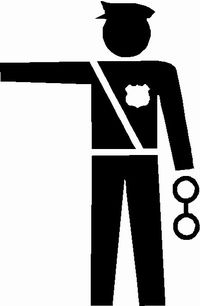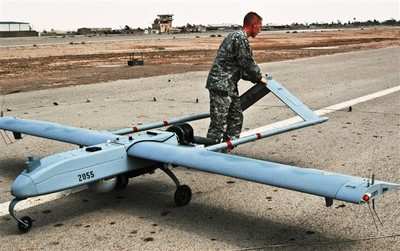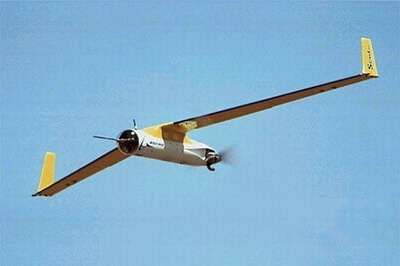Thu, Jun 11, 2009
FAA Bans Local Police From Using Unmanned Air
Surveillance.
 We hear a lot about the success the
US Military has with Unmanned Air Vehicles, or UAV's for missions
such as reconnaissance and even air support for ground troops. But
the FAA has banned local law enforcement agencies from using UAV's
for surveillance operations at potential crime scenes, and that
chafes some local officials.
We hear a lot about the success the
US Military has with Unmanned Air Vehicles, or UAV's for missions
such as reconnaissance and even air support for ground troops. But
the FAA has banned local law enforcement agencies from using UAV's
for surveillance operations at potential crime scenes, and that
chafes some local officials.
Tim Adelman, an aviation lawyer who is currently lobbying the
Federal Aviation Administration on behalf of certain law
enforcement bodies -- so far with limited success -- told the
online publication Government Technology, "The FAA is essentially
trying to scare people into not using these devices or to require
stricter authorization. But that policy exceeds their authority
granted by Congress,"
Law enforcement professionals say UAV's could have a wide range
of practical uses, such as observing signs of activity inside and
outside a house or building during a hostage situation, following
stolen vehicles, and keeping track of forest fires and flooding. In
fact, in 2004, NASA's Dryden Flight Research Center said "The UAV's
ability to fly into dangerous situations makes it the perfect
candidate for the detection and suppression of forest fires."
Sergeant Brian Muller at the Los Angeles County Sheriff's
Department maintains that the UAV is ideal in search and rescue
operations for missing children. He condends that they cover a
large amount of ground in a short time, and could mean the
difference of life or death in some cases. In times when local
governments are squeezed by tight budgets, the cost of a UAV versus
the cost of a helicopter makes them seem like a very attractive
option.

But the FAA's Les Dorr said UAV's are not yet reliable enough
for operation in US airspace. "There is nothing to our knowledge
and no UAS (Unmanned Air System) technology at this time that would
allow unmanned aircraft to meet the same 'see and avoid' standard
that manned aircraft have to operate under," he told Digital
Communities. "Pilots must maintain vigilance during flight to avoid
other pilots within their air space by constantly scanning for
other aircraft," Dorr added.

Lawyer Aldeman said that 'see and avoid' standard would be met
because the UAV's would be operated by police personnel in the
vicinity of the aircraft, and that they would not be used in
controlled airspace near airports. He contends public agencies can
operate UAV's in compliance with all Federal regulations without
additional authorization.
More News
Execute Missed Approach Instructions issued to a pilot making an instrument approach which means continue inbound to the missed approach point and execute the missed approach proce>[...]
Aero Linx: British Helicopter Association (BHA) The BHA promotes the compliant, safe and considerate use of rotorcraft throughout the UK. Its activities are directed by a Council o>[...]
During An Aerial Application Flight, The Engine Lost Power And The Airplane Began To Descend Analysis: The pilot reported that, during an aerial application flight, the engine lost>[...]
Also: AMA Names Tyler Dobbs, More Falcon 9 Ops, Firefly Launch Unsuccessful, Autonomous F-16s The Air Force has begun ground testing a future uncrewed jet design in a milestone tow>[...]
Aero Linx: HeliOffshore HeliOffshore is the global, safety-focused association for the offshore helicopter industry. Our mission is to lead a collective safety conversation, identi>[...]
 ANN's Daily Aero-Term (05.12.25): Execute Missed Approach
ANN's Daily Aero-Term (05.12.25): Execute Missed Approach ANN's Daily Aero-Linx (05.12.25)
ANN's Daily Aero-Linx (05.12.25) NTSB Final Report: Piper PA-36-375
NTSB Final Report: Piper PA-36-375 Airborne-NextGen 05.06.25: AF Uncrewed Fighters, Drones v Planes, Joby Crew Test
Airborne-NextGen 05.06.25: AF Uncrewed Fighters, Drones v Planes, Joby Crew Test ANN's Daily Aero-Linx (05.13.25)
ANN's Daily Aero-Linx (05.13.25)





